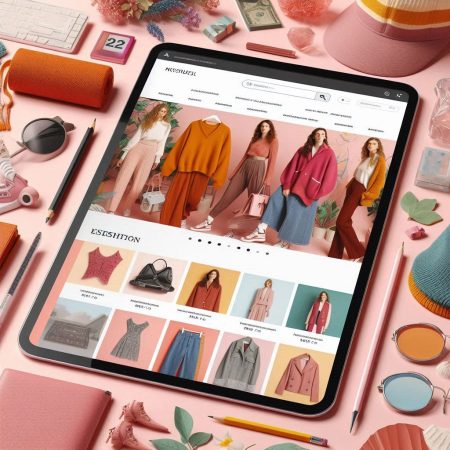Are you looking for a great deal on a laptop?
Buying a new laptop is always exciting. Getting the box home, unwrapping it, and seeing that pristine machine that’s ready to go. No matter how exciting it is, you need to be sensible though. You shouldn’t spend more money than you need to, but how do you guarantee that?
That’s where we can help! Keep reading for this guide on how to get the best laptop deals.
How to Find the Best Laptop Deals
Every retailer is different and will offer deals at different rates and times. Being prepared and shopping around is key to finding affordable laptops. Here are some great tips for ensuring you won’t overpay for a laptop.
1. Decide What You Want
If you want the latest, best laptop you’ll have to pay a premium for it. But, if you don’t want the latest in laptop trends then you can save money by compromising. You might find it’s more cost-effective to upgrade a laptop than buy it with the specs you want right away.
For example, say you need a laptop with a 4 GB ram but they’re way over your budget. Check if you can upgrade the RAM on a model and go for the 1 GB option. Then, buy the memory you want for it as a separate deal. Here are some other ways you can get a better deal by making savings:
- Choose last year’s model
- Choose a laptop with Linux, not Windows
- Buy a similar system from a less well-known manufacturer
Being smart and knowing what you want can help you make cost-effective choices. If you’re unsure of how to do this yourself, take someone you know who has a passion for tech. They’ll be able to help you find the right model with the right upgrade possibilities.
2. Avoid Retail Stores
If you want to get the best laptop deals, avoid the large electronics retailers. Most of the time their prices are the same as the MSRP on the internet.
Even when they do offer a sale, it’s not as much as the discounts offered online. There are also the high-pressure sales tactics that staff use, trying to push up charges on you. Things that cost extra include:
- Extended warranty
- Setup
- Software suites
- Delivery
You don’t need most of these things and software suites you can get cheaper elsewhere. Unless you need to walk in and get one right away, don’t go to the major retailers when buying a laptop.
3. Use Online Outlets
Most major manufacturers and stores have an online store. There, you can buy open box items that have a discount. A lot of manufacturers also sell refurbished laptops online too.
There is nothing wrong with buying a refurbished laptop from the manufacturer. It’s refurbished to their high standards and goes through rigorous quality checking.
Even if you’re looking for a new laptop, still go right to the manufacturer’s website. You can get the best deals there, and could get even more off if you call and ask what they can do. Start here check them out at Lenovo.
4. Shop Around
There are several websites you can use like Pricegrabber that will compare online for you. They will query the different online stores, looking for the best deal on your chosen laptop.
Shopping around is always a good idea, but if you’re using a comparison site, be aware of some things. Comparison sites only look at a finite number of stores. If you know of a store with good prices that isn’t on the site, make sure you check it out yourself.
Another thing to be aware of is that there will be a large shipping charge on these comparison sites. For example, there have been cases on some sites where the savings were $200 better than anywhere else. But then they wanted a whopping $400 for shipping!
If you do decide to get a laptop from an online reseller make sure you look up their reviews from past customers. You should know what sort of reputation they have, and the internet is full of fakes and frauds.
At best, you won’t get the product you ordered. At worst you could end up with fraudulent charges to your bank cards. So make sure you’re doing your due diligence.
It’s worth the time it takes to do a thorough delve into the financial status of the company. Check online reviews and see if they have any industry awards or accreditations. This will help keep you protected against those deals that look (and are) too good to be true.
5. Take Caution with Used Laptops
As we’ve mentioned, buying refurbished laptops can get you a good deal. But they’re not the same as a used laptop, which you should avoid. The reason for this is that laptops take a battering over the years.
A refurbished laptop has passed tests and certifications to meet manufactures’ original standards. There aren’t those guarantees with a used laptop.
If there was someone you know, family or friend, that’s selling a laptop then it’s worth considering. You can take a look at it in person and try it out. But don’t buy one off the internet.
You never know if the description is accurate or if the previous owner dropped it until it’s too late. You could still end up paying a small fortune only to end up with a dud that breaks on the first day.
How to Choose a Laptop
With those tips in mind for how to get a good deal, let’s look at some tips on how to find the right laptop. You’ll only get that awesome price if you’re prepared and know what you want.
1. Smaller Screens are More Portable
The usual range for laptop screen sizes sits between 11 and 17 inches. Then, that determines the system size, which will fit the display. As such, smaller notebooks are often lighter and more portable than larger ones.
If you’re not moving the laptop much, a 15-inch screen is a good idea. This way you can make the most of the screen real-estate for watching shows/films or playing video games.
For those of you who need to travel or carry their laptop around then a 13-14 inch laptop will work. This provides the best balance between screen size and portability.
If you’re buying a laptop for your children that are under 12 then an 11.6-12.5 inch laptop will be easier to handle. For laptops that will only stay on your desk, then consider a 17-inch laptop to get more display size like a desktop.
2. Choose a Resolution of 1080p at Least
If your budget stretches to one (and you can get them for under $400) then choose at least a resolution of 1920×1080. This will sometimes display as 1080 or Full HD.
Resolution refers to the number of pixels on the screen. This is what makes it easier to read text on your laptop or make screen displays clearer. If you’re multitasking, this lets you stack two windows side by side without the need to scroll.
3. Pick a Laptop With a Battery Life of at Least 8 Hours
You may need to be away from an outlet, especially if you’re traveling or on the go. Or it could be to enjoy some time on the couch.
Either way, you want a laptop with more than 8 hours of battery life. The only exception to this rule would be a gaming laptop, this is because they need so much power to run.
4. Choose Windows or macOS
Chromebooks can be great, but they’re limited in what they can do and works better for the kids’ laptops. It’s popular in schools due to how easy it is to use, and how hard it is for malware to get in.
For most people though, you’ll want to go with Windows or a MacBook as they offer more functionality.
To decide between the two, Windows is more affordable. You can also get it on laptops with touchscreens. MacBooks though offer better security. They also have better-inbuilt software for video and photo editing.
5. Only Choose a 2-in-1 if You Need the Touch Screen
There are a lot of options on the market for 2-in-1’s these days. They’re great if you actually do plan on needing and using the touch screen. But, if you’re not, you can usually get a better laptop for the same price as the traditional design.
To get that touch screen, 2-in-1s usually cost more for fewer specs. They also have less battery life than the other traditional models on the market. So think about if you need that touchpad or if it’s only a cool gimmick.
6. Specs Not to Ignore: Core i5, 256GB SSD, 8GB of RAM
If you have a laptop budget of over $600 the least you want to get spec-wise should include an Intel Core i5 processor. AMD Ryzen Mobile and Intel Core i7 are also good options.
You should also get 8GB of RAM and an SSD (solid-state drive) of 256GB with that 1080p screen. The SSD is of particular importance, rather than a hard drive. This is because it helps programs load faster.
Best Laptop Deals: Don’t Miss Out
So, there you have it! Now you know how to get the best laptop deals and how to choose the right laptop for your needs.
It’s important to work out what you need and what you can compromise on. Knowing a couple of models that you’re interested in makes shopping around easier. Be cautious who you buy from and always do your due diligence. Often the best deals come from the manufacturer.
If you enjoyed this article, then keep reading our blog for more tips and tricks to help you navigate the tricky world of technology.






